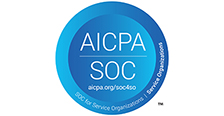
-
January 1, 1900
Designers Beware
by Fred Pugliese
The Americans with Disabilities Act ("ADA") provides for the removal of architectural barriers i.e., physical barriers that make access by people with disabilities difficult in all public accommodations where such removal is "readily achievable." If removal is not "readily achievable", a phrase open to varying interpretation, alternative methods of providing the services must be offered. New Jersey's Barrier-Free Subcode provides that all "public buildings" constructed or substantially remodeled since 1977 must be made accessible. The Barrier-Free Subcode sets out accessibility standards for walkways, parking lot spaces, ramps, entrances, doors, corridors, stairs, floors, elevators, wheelchair lifts, public restrooms, water fountains, public telephones and warning signals. The Barrier-Free Subcode provides that a failure to design and construct any multi-family dwelling of four units or more in accordance with barrier-free standards shall be unlawful discrimination. Such claims are then prosecuted in accordance with the provisions of New Jersey's Law Against Discrimination.
Accessibility Standards
Dimensions and construction specifications for sites, buildings, and structures required by the Barrier-Free Subcode must comply with CABO/ANSI standards. Such housing must include accessible public spaces and routes of travel into the residential units. Additionally, individual units must have adaptable elements, such as kitchen counters, sinks and grab bars that can be readily modified for individual needs. Responsibility for enforcing the New Jersey Barrier-Free Subcode falls within the purview of the building subcode official.
Individuals Covered By Handicap Laws
A person with a disability encountering inaccessible housing may file a complaint with the regional office of the U.S. Department of Housing and Urban Development and/or New Jersey Division of Civil Rights. Alternatively, such a grievance may be filed in federal or state court. To be included under protections of the ADA, a person must have a disability or have relationship or association with an individual with a disability. A physical or mental impairment that substantially limits one or more major life activities also qualifies as a disability.
Potential Lawsuits
Given the fact that under the Barrier-Free Subcode "a failure to design . . . shall be unlawful discrimination", it is important for design professionals to be cognizant of the laws affecting barrier-free design and construction. Under the Law Against Discrimination, the statutory award of counsel fees is incentive for law firms to take on these types of cases leading to the increased filing of such claims. Therefore, it is advisable for design professionals to ensure that their drawings comply with both state and federal accessibility criteria. The advice and assistance of legal counsel familiar with state and federal discrimination laws can help achieve compliance.
Fred Pugliese is an associate of Hill Wallack where he is a member of the Litigation Division and the Construction Industry Practice Group. He concentrates his practice in the representation of architects, engineers and design professionals and their professional liability insurance carriers.


